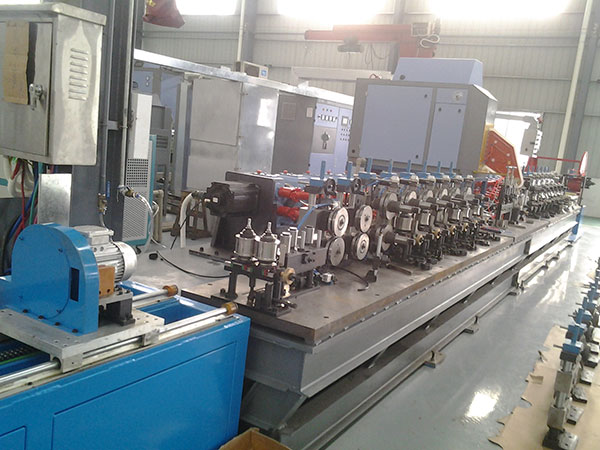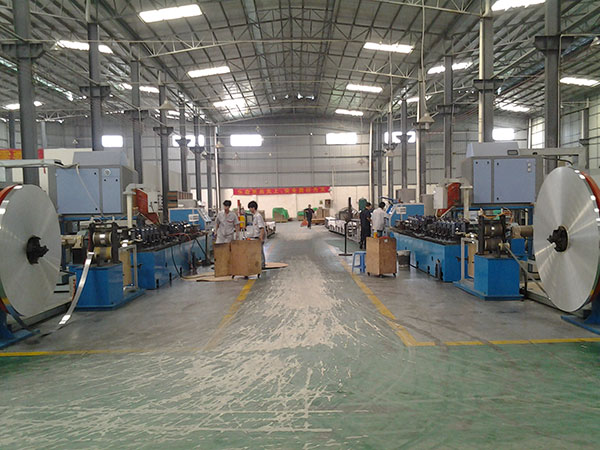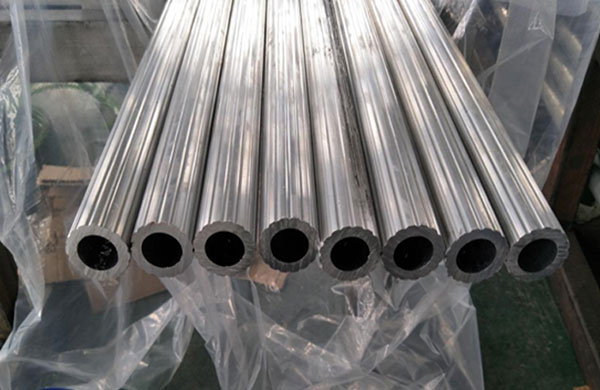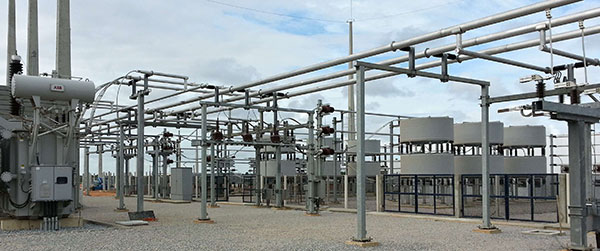Aluminum alloy seamless tubular bus pipe are used primarily for outdoor substations and switching structures where long spans between supports are required. The inherent rigidity of a tubular shape in all directions resists wind and ice loads, as well as the forces of short circuits. Since strength is a pimary requirement of
aluminum alloy seamless tubular bus, the higher-strength aluminum alloy are used.
6063 T6 alloy in ANSI Schedule 40 pipe is used widely for outdoor tubular buses because of excellent mechanical and electrical properties and availability. 6061 T6 and 6101 T6 T65 aluminum seamless tubular bus are used where particularly high strength is desired and conductivity requirements are lower.


The round tubular bus is the most efficient electrical shape for an a-c bus conductor because it has the lowest skin-effect ratio of the commonly used types. The current rating is limited, however, as compared with that of flat bar, because of the smaller ratio of heat-dissipating surface area to volume. Internal cooling of the tube by forced air or circulating coolants overcomes this handicap, but is not often commercially practical except for electric furnaces.
The electrical characteristics of round
aluminum alloy seamless tubular bus pipe have led to its use for heavy-duty generator and switching buses in central stations. Since the design of modern isolated phase buses is such that short circuit forces are not a problem, aluminum 1350 is preferred because of its high conductivity.


Square tubular bus has low skin-effect ratio, similar to that of round tubes, and has the advantages of requiring comparatively simple adapter plates for mounting the bus on pedestal insulators and the other flat sides facilitate attaching pads for taps. For this reason it is used for generator-phase and station bus, often in protective enclosures. 6101 T61 and 6063 T6 alloy are principally used, and staggered ventilation holes often are provided in top and bottom surfaces.

Aluminum alloy seamless tubular bus pipe is an extruded tubular product used to convey electricity. Aluminum seamless tubular bus pipe is generally made of 6063 T6 alloy because of its excellent mechanical and electrical properties. 6061 T6 and 6101 T6 T65 alloy tubular bus is used where high strength and lower conductivity are required.
Physical and Electrical Properties of Aluminum Wrought Bus Conductor Alloys(ASTM B236, B317, and The Aluminum Association)
* Applying to all alloys and tempers of wrought alloys, typical values.
* Weight, density lb/cu in.(rounded) 0.098
* Specific heat, cal/gm/℃ or BTU/ib/°F 0.214 at 70° for 1350 and 0.220 for 6101(a)
* Coefficient of thermal expansion(linear)/℃0.000023
* Specific gravity-----2.70
* Modules of Elasticity, Typical, psi 10×106, Up to 2% higher icompression
|
Property |
Alloy and Temper |
|
1350 Any temper |
6101 T6 |
6101 T61 |
6101 T63 |
6101 T64 |
6101 T65 |
6061 T6 |
6063 T6 |
|
Thermal Conductivity W/mK(typical) |
234 |
218 |
222 |
218 |
226 |
218 |
167 |
201 |
|
Thermal Conductivity watts/sq.in/in/℃ |
5.9/6.0 |
5.3/5.4 |
5.5/5.6 |
5.4/5.5 |
5.7/5.8 |
5.7/5.8 |
3.9 |
5.1 |
|
Electrical Conductivity percent IACS at 20℃(c) |
61/62 |
55/56 |
57/58 |
56/57 |
59.5/60.5 |
56.5/57.5 |
3.9 |
5.1 |
|
Electrical Resistivity(dc) at 20 ℃(68°F) micorohms/sq.in/ft(d) |
13.35/13.14 |
14.81/14.55 |
14.29/14.04 |
14.55/14.29 |
13.69/13.46 |
14.42/14.17 |
19.39/18.94 |
15.37 |
|
Temperature coefficient of electrical resistance at 20℃/℃(e) |
.00403/.00410 |
.00363/.00370 |
.00370/.00383 |
.00370/.00377 |
.00393/.00400 |
.00373/.00380 |
.00284/.00277 |
.00350 |




